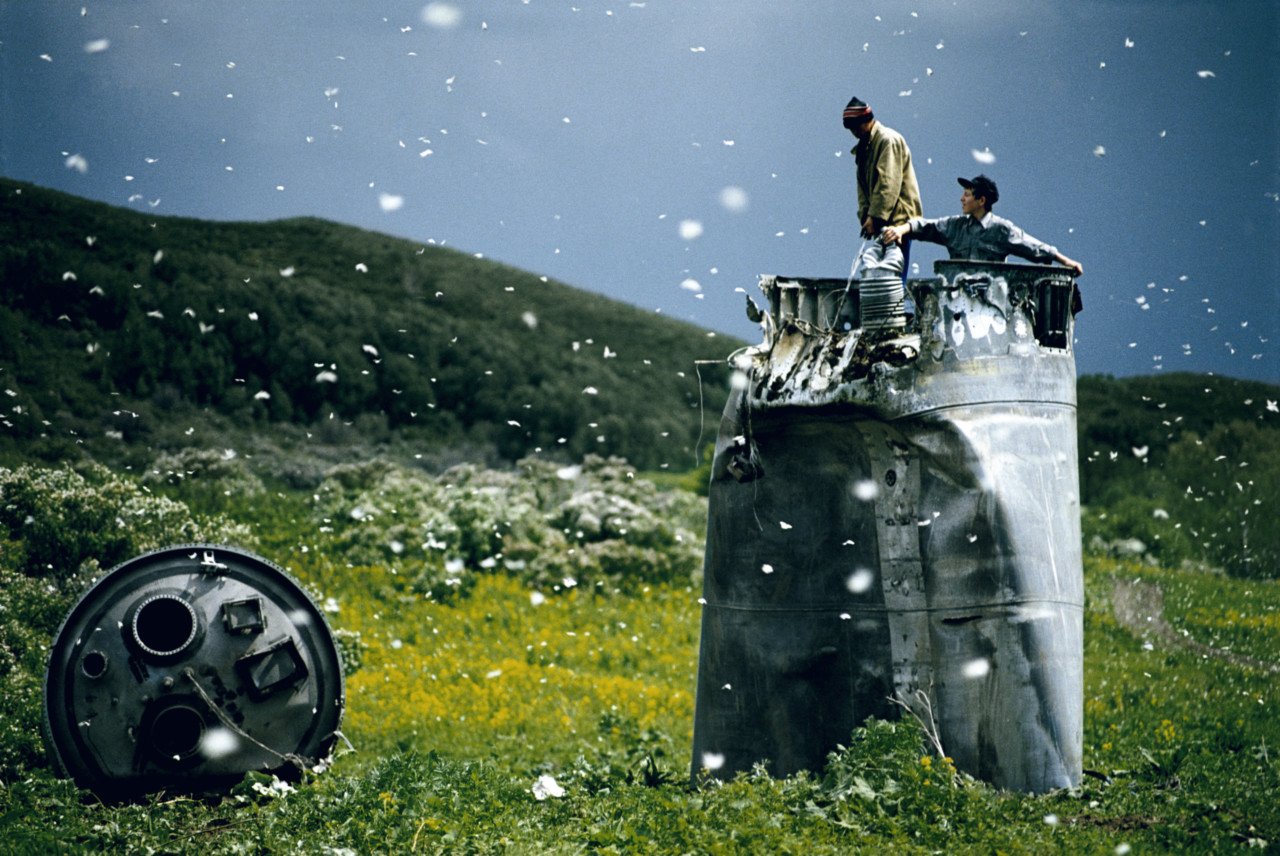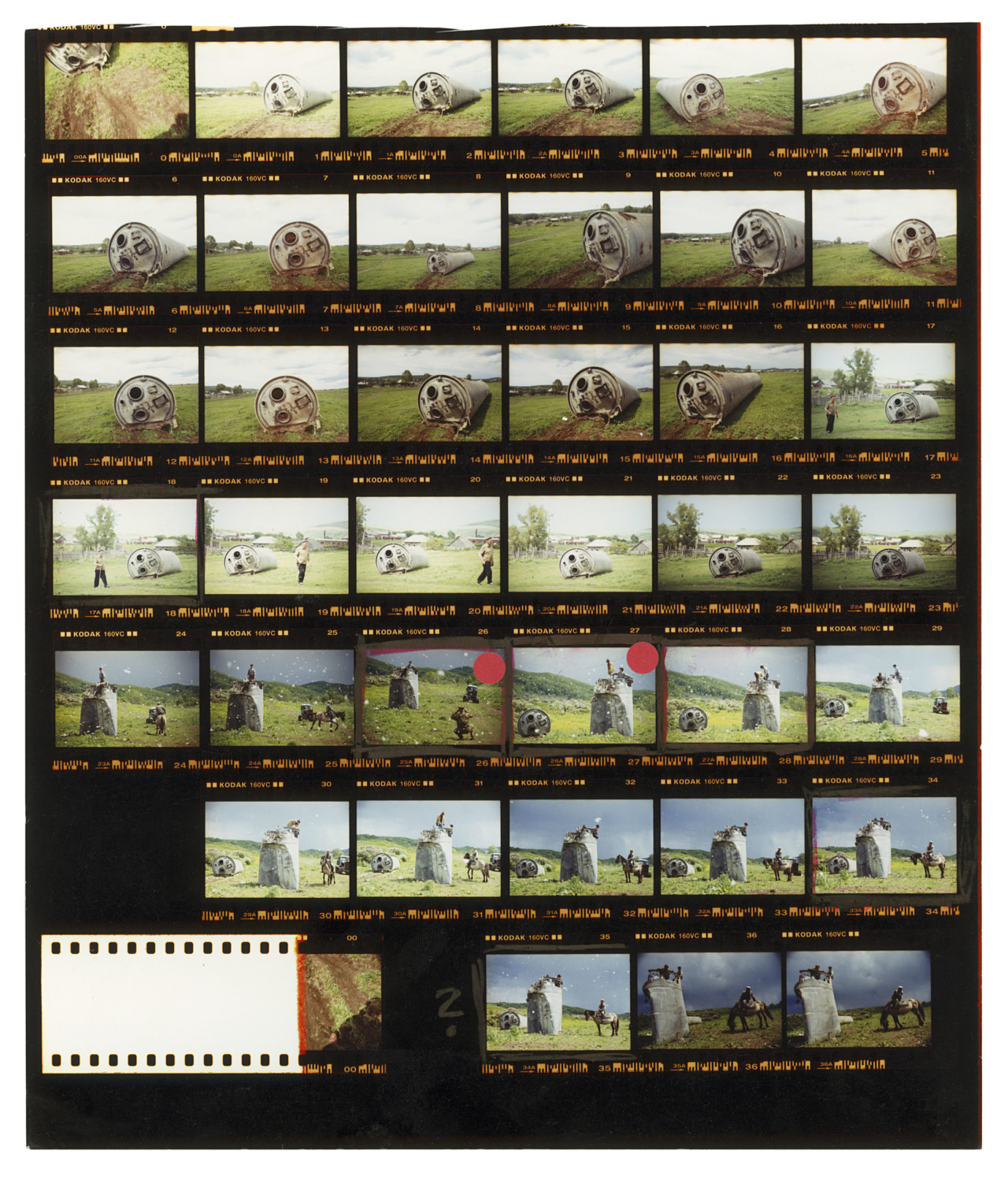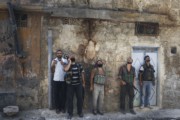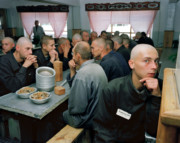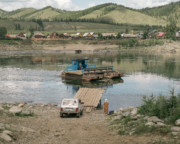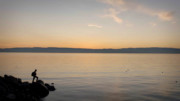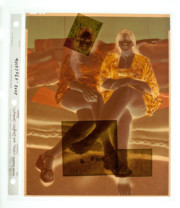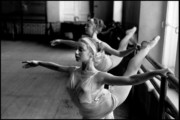Making the Image: Jonas Bendiksen’s Crashed Satellite
The photographer explores the making of the cover-image from his 2006 book, Satellites, the culmination of several years travelling across the southern borderlands of the former USSR
Contact sheets: direct prints of sequences of negatives were — in the pre-digital era — key for photographers to be able to see what they had captured on their rolls of film. They formed a central part of editing and indexing practices, and in themselves became revealing of photographers’ approaches: the subtle refinements of the frame, lighting and subject from photograph to photograph, tracing the image-maker’s progress toward the final composition that they ultimately saw as their best. There is a voyeuristic aspect to looking at a contact sheet also: one can retrace the photographer’s movements through time and space, tracking their eye’s smallest twitches from left to right as their attention is drawn. It is as if one were inside their head, offered a privileged view through their very eyes from the front row of their brain.
As Kristen Lubben wrote in her introduction to the book, Magnum Contact Sheets, first published in 2011 by Thames and Hudson:
“Unique to each photographer’s approach, the contact is a record of how an image was constructed. Was it a set-up, or a serendipitous encounter? Did the photographer notice a scene with potential and diligently work it through to arrive at a successful image, or was the fabled ‘decisive moment’ at play? The contact sheet, now rendered obsolete by digital photography, embodies much of the appeal of photography itself: the sense of time unfolding, a durable trace of movement through space, an apparent authentication of photography’s claims to transparent representation of reality.”
Below we reproduce Jonas Bendiksen‘s entry from Magnum Contact Sheets, discussing the image that was to become the cover of his book, Satellites.
Altai Territory, Russia. 2000.
“The image that became the cover of my Satellites book was one of the few I ever shot on negative film. Normally I would use transparencies. However, I think I had probably run out of slide film on that day, and was going on whatever I had in the bottom of my camera bag. The image was shot in 2000 in the Altai Territory of Russia. My wife Laara and I, then living in Moscow, were doing a story about the people who lived downwind from Russia’s main spaceport, Baikonur.
I hadn’t looked at this contact sheet in years, as I’d cut out the chosen frame and left the rest in an archival box I hardly ever accessed. Once I dug it out, I couldn’t help laughing aloud. I was shocked, but thrilled, at what it showed – a complete unawareness of the magic that was swirling around me. Or perhaps it was the last breath of the save-your-film-you’ve-only-got-36-shots era? In any case, here we were in a cloud of white butterflies circling the remains of a Soyuz space rocket’s second stage, while local farm boys were gutting it for usable scrap metal. In total, I shot less than half a roll of film. From the basic angle and composition from which I got the final select, I clicked the shutter three times. That would not have happened today.
In a sense, it makes me a little wistful to look at this sheet ten years later. When this was shot, I was just at the beginning of my career and was doing everything for the first time. I wonder if I can ever recapture the rawness of those first years of photographing – when everything was so fresh to look at that I didn’t seem to think a freshly crashed spaceship with farmers on top of it was anything that far out of the ordinary; nothing worth a couple more rolls of film.”
The above contact sheet is now available to purchase as an exclusive 16×20″ Contact Sheet Print on the Magnum Shop.


